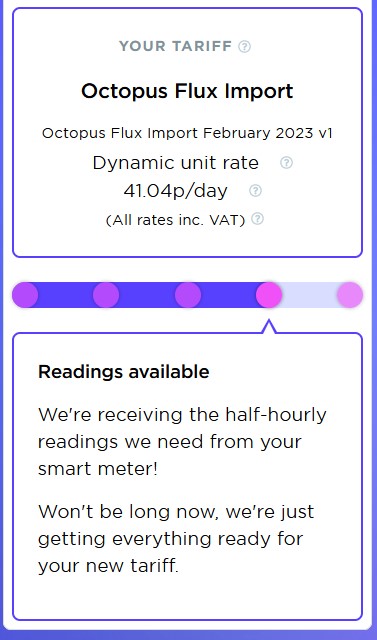This is my sort of worse case scenario (battery 8.2kWH, 2.4kW charge/discharge rate, 1 kWh consumption per hour for background stuff, no solar).
This doesn't take into account efficiency loss of storing kWh, or a more extreme usage scenario like using major appliances such as cooking or washing.
No Schedule could also be configured to hold a much lower SOC %, but you may as well drain it in a way.
With this model, ALL solar generation would be considered exported, so that cost per day of £6.63 is without any export calcs, if I exported 10 kWh in the day then it would reduce that by £2.44 (£0.244 * 10 kWH). I would need 27.17 kWh exported from solar to make the energy free for the day. Exported solar after 16:00 would have a higher value, so I'm again using worst case calc of regular daytime export rates.
This is the same thing but for Go. No Export listed as no point mentioning it really, it's too minor most of the time to bother, and there is no point doing forced discharge,
I've offset the start by 30 mins but 01:00 - 05:00 is 4 hours and isn't going to be miles off 00:30 - 04:30 for most of us.
Go is cheaper with no solar on the same usage basis at my current rates. I won't re-post a new image unless there is demand for it, it but if I do the new current Go rates (12p / 44p) then it seems to come out at a daily charge of £6.66, extremely close.
Factors in Go's favour is that it benefits a little more from the min/max arrangements, you don't really gain much on Flux for not charging, but Go allows you to be really efficient if you leave headroom for charging in the day and making the most of the generation as it comes in.
For Flux, any import at the peak rates are very punishing unit rates, but if you can avoid that, it seems you can be reasonably efficient still.
It's possible to get negative prices on the day with Flux with extremely good generation, but with Go the SEG is so poor that I think the best you can hope for is basically close to £0 on a day rather than negative.
I'll adjust the consumption down a bit on both and see how the usage compares.



